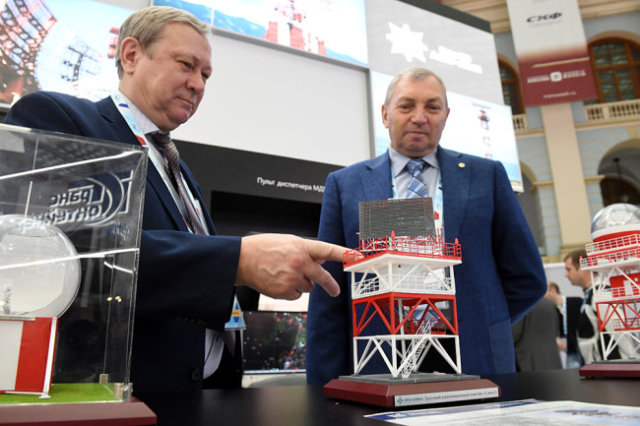The military checked how the system of search, recognition and transmission of information about air objects operates in the north-east of the country. First of all, the generals were interested in the effectiveness of this system in the Arctic zone of Russia.
Among the facilities included there, the Sopka-2 track radar systems deserve special attention. With their help, specialists manage air traffic and control the flights of civil and military aircraft. And the air defense calculations make sure that no intruders enter the Russian sky. Each station has a circular view, "sees" targets for 450 kilometers, even if they fly at an altitude of 35 km, and accurately gives their coordinates for 10 kilometers from the tracking point. What is very important - in a group of flying objects, the station can recognize the type of each of them. That is, in the event of a violation of the border, it will tell the anti-aircraft gunners which target should be shot down first.
The capabilities of the Sopka-2 over-the-horizon radar make it possible to do this effectively even in conditions of a long polar night and extreme cold. The fact is that this station has a protective antenna dome and is able to work with wind up to 40 meters per second and frosts up to 40 degrees. These" climatic " advantages of the radar are highly appreciated by the military from Wrangel Island and Cape Schmidt-two points of the "Sopok"base.
In fact, there are much more such stations in the Far East and, especially, in the Arctic zone of the country. Modern radar, for example, "registered" in Primorye. The military has its own over-the-horizon radar systems in the Trans-Baikal Region and other regions of the country. Their appearance in the harsh lands is quite understandable. Now there is an active economic development of the Arctic territories, more and more countries prefer the traditional routes from Europe to Asia to the Northern Sea Route. And this does not suit everyone in the West. It is no accident that the interest of NATO countries in the Russian Arctic has increased dramatically in recent years. This means that our military has to be on the alert and constantly monitor the Arctic sky, including with the help of such radars as "Sopka-2".
Another test of the station's operation on Wrangel Island, located between the East Siberian and Chukchi Seas, proved its high efficiency. The calculations of the Sopka-2 radar station detected and determined the coordinates of the simulated enemy aircraft (they were imitated by the crews of the local army of the Air Force and Air Defense), making a raid with the transponders turned off. To complicate the task, the air targets constantly changed their direction, speed, and flight level.
After identifying the aircraft, the radar crews took them on escort, and the information received about the "alien" aircraft was promptly transmitted to the air defense command post.
Yuri Gavrilov

